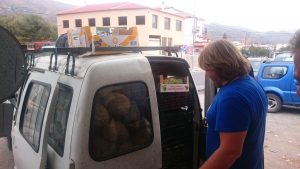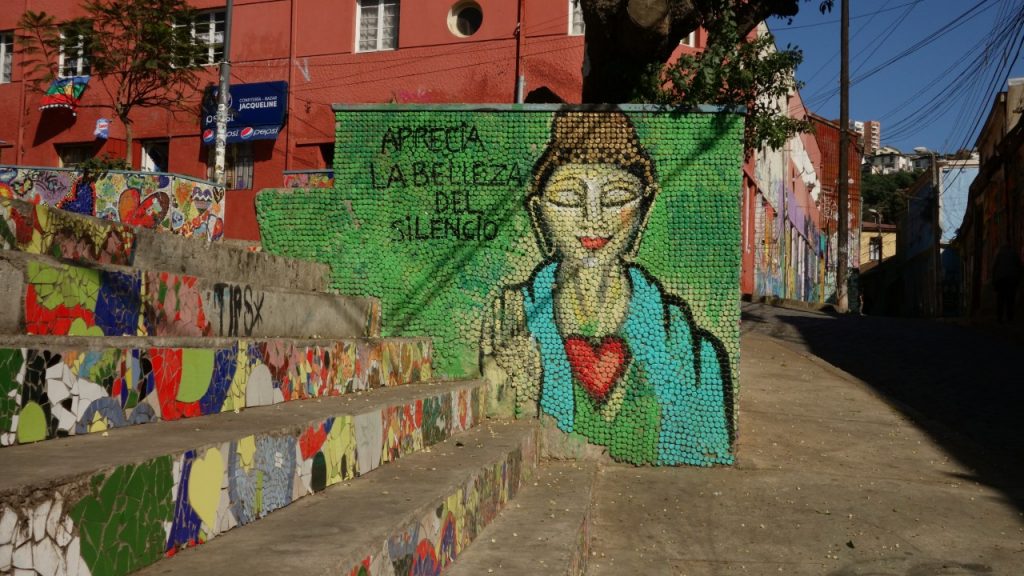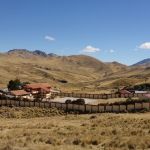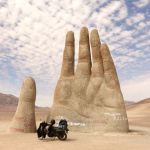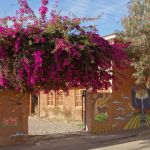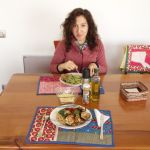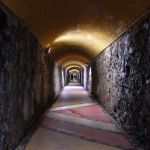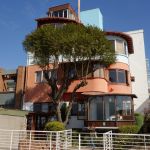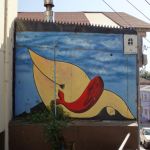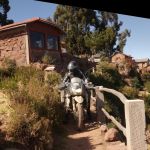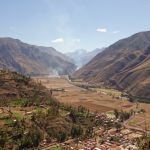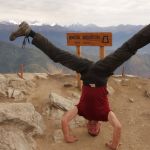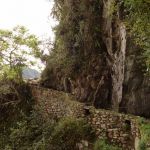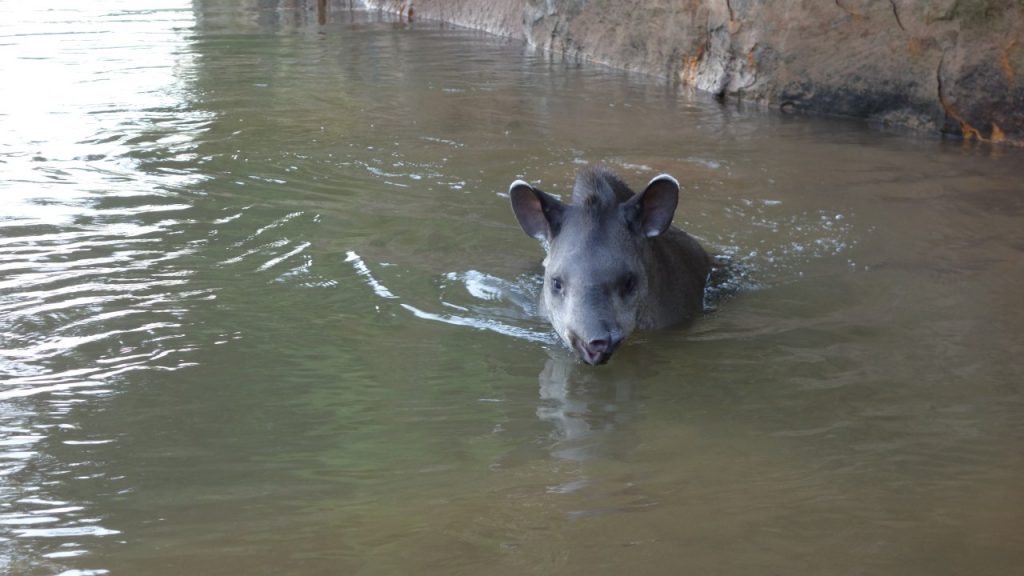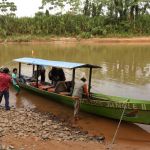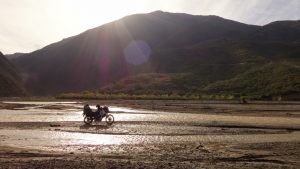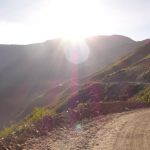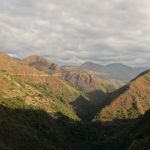Posts By The Tall Dane
The Morning Routine
Memories from my time in Spain in August. Thank you both Didde-Marie and Anita for partaking in my project(s) and for playing with me. Hope to see you and play with you again soon ❤️️
Flyer: Anita Kajor a.k.a. YogAnita
Base: Jørn Christensen
Creators: Didde-Marie Møller Hansen & Jørn Christensen
Track: Monday Morning, 3 A.M. (Lancefield)
Stockholm information strategy
In Denmark (Copenhagen) this space would be a battle ground for 5 different quick loan companies. Not in Stockholm… Here they actually show information!?!?1
- …and ads for SL themselves on how environmental friendly buses and public transportation is. But I think that is fair :-) ↩
My only photo from Amsterdam
The meaning of this sign did not register immediately with my (and my friend)… don’t know why, but perhaps it is because the liquid here does not behave the same way as I am used to (i.e. leveling out to be horisontal)!?!?!?


The plan is to not have a plan
As I am writing this, I am sitting in a bus from Madrid to Torvizcón venturing out to new adventures. The trip started yesterday evening with my plane being an hour delayed and before that: My last working day at 3Shape.
Wait, what? You quit your job at 3Shape?
Yes. And am in the process of selling my apartment in Copenhagen as well.
It has been a process for some months now to get this started, and already I have had a number of Wows, Amazing, Wish it was me, and I admire your courage.
My journey to where I am right now actually begun some time back. I mean; the actual decision to quit my job was done late April, start May, but before that I had been contemplating a bit on my life, trying to figure out if I was where I wanted to be. And before that, of course, was my trip to South America which may be seen as the place where I got time to think those thoughts, or just a different reaction to the same desire (already there before the South American trip) – depending on how you view it. So where do you draw the actual line in the sand? I don’t know.
But as I said; it has been a work in progress for some time. Coming back from South America I had a number of dreams and projects that I would like to find time to do in my day to day life. I definitely wanted to do more acroyoga and also teach it – to share the joy that it has brought me. I also wanted to teach climbing again, and planned a fall training course that unfortunately did not fan out. Getting more and more pressed on time (and sleep) with all the things I wanted to do, I also realized that I had not moved out of Copenhagen as I had promised myself (multiple times).
Realizing all this, it became clear to me that if I did not move now, then I might never move, and that was a scary thought. So when people compliment me on the courage to break up, to me it is more a kind of lack of courage to stay1.
So my plans right now are quite slim. I am participating in the Partner Acrobatics Teacher Training here in Spain (hence the bus trip) and after that I am returning to Copenhagen to complete the sale of my apartment. From there on, I have no plans. I do have some vague ideas and hopes for opportunities to arise, perhaps travel a bit, and other “usual” stuff that free birds do. But actual planning…? No.
This, I think, will be the first time in my life where I do not have a plan for my (immediate) future – and that is also an adventure in itself 🙂
- Well, more or less. My perception of what is important and what is the driver behind my decisions change a bit over time. Part of the story is also that I have not managed to establish a family yet. While it is easy to focus on the negative side of that, I decided that I also need to focus on the positive side of that and take advantage of the freedom that comes with that situation. ↩


Returning to Santiago and to Denmark
For the impatient: Check out my hobby project Up Next DJ or read my book review of Thinking — Fast and slow. Or just skip down to the photos at the bottom of the page 😉
Arequipa and Iquique
When I left you last, I had to some extend come to and end of my travels — at least in the sense that there was nothing left that I had to see or do. And hence, the rest of the trip has been more relaxed and nothing “big” has really happened. But looking through my photos, something has happened anyway 😮
The trip from Cuzco down to Chile was beautiful. Colca Canyon and Arequipa was beautiful. Santa Catalina Monastery in Arequipa was sooo nice. I loved walking around in there… People say it is a city within a city — and it really is! Lovely garden and so peaceful 🙂
In Chile, I spend 2 weeks in Iquique. I tried to take para-gliding lessons, but I only had one lesson and then the weather changed. So I spend my time relaxing, slacklining on the beach, and working on an old hobby project of mine: Up Next DJ. I guess an open question here would be why would you use your time in South America working on your computer? Well… I guess that was kind of the plan from the beginning. It has been a project that I have wanted to work on for a couple of years — but never found the time. Now, with 6 months out of the calendar, I thought I might find time.
Santiago and Valparaíso
Anyway… Lots of pit stops down along the coastline of Chile: I visited Kat in Antofagasta again. La Serena, Vicuña, and Pisco Elqui was really beautiful as well. I really enjoyed coming out of the desert. It may have it’s beautiful moments, the desert, but I am not so marveled by it as (some) other travelers seem to be. I like the green part more 😉
I had 2½ weeks in Santiago and Viña del Mar / Valparaíso1 catching up with the acroyoga community and selling my bike. I loved Valparaíso; relaxed atmosphere, cozy cafés, beautiful street art — a very colorful city.
Final thoughts?
And now, I am sitting in the airplane somewhere over Argentina contemplating on my journey. I am so happy that I took the time of to live out this adventure! Would I do it again? Yes and no. Right now I feel that I have lived out my desire for traveling solo. On a motorbike. It is just hard to pack up your things every day, or every 2 or 3 days, and move on to the next place. I do like my alone time, but I also like to be able to share experiences with people. You know, a travel buddy with whom you can connect and remember small funny things from your adventure.
And it is difficult really to connect with people when you are on the go. You may find a “long lost friend” and establish strong bonds in a day or two, yes, but most often I think it is something that is build up over time — over shared experiences and beautiful moments. And when you are on the go, it just is difficult to find this time and to commit to this when you think Oh, I will be leaving tomorrow. Or the day after. Also, doesn’t help if you are a bit introvert and a bit picky with whom you spend your time… 😉
And also… The language. I knew almost nothing of Spanish when I embarked, and now…? Well… a bit more, but still not enough to have an interesting (and fluent!) conversation. Was it a problem? Hm… no… I survived! 🙂 Did I miss out? Yes! There were several occasions were I wished I knew more Spanish. On the other hand, I did find it difficult to motivate myself to sit down (in a school) and learn it. Traveling alone, and in hostels, Spanish was not really needed, and there was just so many other interesting options for me to do 🙂
Hm… what else? I am both looking forward to come home, but also sad. There are many people that I wished I had more time to connect to. So many where I want to say “See you again” instead of Goodbye. But I also miss my family and friends in Copenhagen. Lots of fun stuff going on in Denmark as well! And who knows… perhaps some new adventure will pop up 😉
Until then… Take care 🙂
Thinking — Fast and slow
Oh… oh… oh… I almost forgot! During my travels I found time to read the book Thinking — Fast and slow by Daniel Kahneman. An absolute recommendable book to read. Read my review of it and see if it inspires you 😉
- Viña del Mar and Valparaíso are two “minor” cities just west of Santiago at the coast. They are really close and grown together — to me it just seems like one big city. But you know… traditions and a sense of belonging ;-) ↩


Up Next DJ
So, a couple of years back I was having a great summer in Copenhagen with lots of good parties and good friends. To make the parties really really great, the organizers of the parties also thought Hey, let’s have a DJ! One that will keep the party filled with good music and prevent (drunk) skipping of songs 🙂, and so they hired / invited local DJs in the community to come and play. Great, right?
Well… for me not so great. I did not like the music that much, and my impression from talking with other (potential dancing partner) friends I was not the only one. So I remember walking home, disappointed, from one particular party with two main questions on my mind:
- Why is it more important for the DJ that the beat is fluent and mixes correctly from track to track, than there is people on the dance floor?
- And if the DJ notices that there is no people on the dance floor, why is it that his conclusion is Oh, it must be because the music is not loud enough… and turns up the volume.
Result — at least as I saw it — a great party with great friends, but with music too crappy to dance to, and too loud to have good conversations. And hence, the idea of Up Next DJ was born 🙂
I actually made a prototype of Up Next DJ back then — at that time I called it Virtual DJ — but I did not have the time to develop it further and it stayed dormant a few years. Now, while traveling in South America, I took my time to develop it a bit further. The plan (at least initially) is to get it to be a semi-mature service that people is able to use. Where it goes from there, I do not know 🙂
If you would like to know more, or just be kept updated, please visit Up Next DJ or write me a mail at contact – at – upnext – dot – dj.
Note: At the time of writing this, the current state of the project is still in development. If you want to become a beta tester (when time comes) or if you want to join the project (really appreciated skills would be Android or iOS app development, web UI design, graphics design) please also write to the above mentioned address.
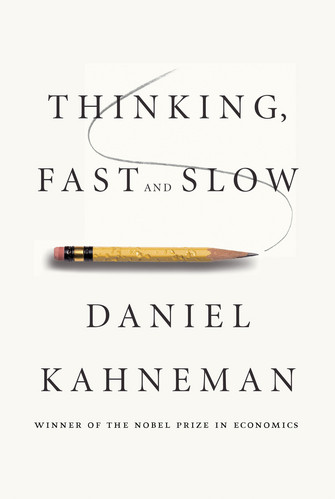

Thinking — Fast and Slow
And now to something completely different…
Have you ever wondered why you make the choices in life you do — e.g. not learning from bad experiences?
Or why it is difficult for people to make good decisions about future — say, not saving up for retirement?
Or why people seem to make contradictory choices — e.g. valuing same things different in different contexts?
If so, then this book may be something for you…
Lying on my desk for almost a year, I finally found time to read it while traveling. And I loved it. Daniel Kahneman takes us through 30+ years of research that he and Amos Tversky have made since the 70s. It is a story about the two systems (the fast and the slow) in our brains, how they interact, and the mistakes they give rise to. It is engaging, surprising, and I had so many eureka-moments reding it… I have made so many notes and references to things I want to remember. Just to showcase a little bit of what it holds, here are some subjects that it handles. See also the TED-talk by Kahneman below for an introduction to his two selves — the experiencing self, and the remembering self — and what impact it (should) have on our choices for the future.
System 1 and System 2
Before presenting a few topics from the book, I have to introduce to you System 1 and System 2. To make it very brief here, one could characterize the two systems as
- System 1 – the fast one
-
- Responsible for automatic tasks, such as forming intuitions and emotions, reading facial expressions, retrieving trivial knowledge.
- Operates automatically and quickly. It is always running in your subconscious — cannot be turned off.
- Can be trained to execute pre-learned skills, such as automatic responses and experience-based intuitions.
- Responsible for storing, associating, and retrieving memories.
- System 2 – the slow one
-
- Deliberate thoughts and self-control.
- In use where mental effort is required. E.g. calculating difficult mathematical questions (what is 34 x 21?) or engaging in attention-requiring conversations.
- Can either endorse or reject information from System 1. Endorsed information manifests itself in beliefs, attitudes, and intentions.
- Is a scarce resource. You cannot play chess while calculating 34 x 21 while doing (non-routine) dancing while controlling your breath, etc. Actually, most often you can only do one task at the time requiring support from System 2.
- Is lazy. Often mistakes that we make arise from System 2 failing to catch non-well-founded impressions from System 1, jumping to false conclusions.
The details of these two systems are, of course, much much more complex — these are just to give you a brief sense of what we are talking about.

Sketch of “Thinking — Fast and slow” by Eva-Lotta Lamm.
WYSIATI
Not to be confused with WYSIWYG, the What You See Is All There Is is a concept that Kahneman introduces early on in the book and uses in so many contexts that it deserves its own acronym: WYSIATI. It basically means that when you evaluate a story, a set of facts, or impressions of people, etc., you only evaluate what is presented to you, and you often fail to counter in other facts that are not readily available to your System 1. Your System 2 fails to stop up and ask what is missing from the story. An example from the book1:
The measure of success for System 1 is the coherence of the story it manages to create. The amount and quality of the data on which the story is based are largely irrelevant. When information is scarce, which is a common occurrence, System 1 operates as a machine for jumping to conclusions. Consider the following: “Will Mindik be a good leader? She is intelligent and strong …”. An answer quickly came to your mind, and it was yes. You picked the best answer based on the very limited information available, but you jumped the gun. What if the next two adjectives were corrupt and cruel?
Take note of what you did not do as you briefly thought of Mindik as a leader: You did not start by asking, “What would I need to know before I formed an opinion about the quality of someones leadership?”
In short, after hearing the two first adjectives, System 1 immediately jumped to the conclusion that Mindik is a good leader, and even-though the two next adjectives may be negative, there will remain a bias favoring the first impression.
The premortem
One of the features of System 1 is overconfidence. Kahneman argues that it can be tamed but not vanquished, and that it arises from the fact that the validity of a story is based on it’s coherence — not by the quality or amount of data. WYSIATI. He draws out the premortem procedure, actually contributed by Gary Klein2:
The procedure is simple: when the organization has almost come to an important decision but has not formally committed itself, Klein proposes gathering for a brief session a group of individuals who are knowledgeable about the decision. The premise of the session is a short speech: “Imagine that we are a year into the future. We implemented the plan as it now exists. The outcome was a disaster. Please take 5 to 10 minutes to write a brief history of that disaster.”
I immediately found myself thinking of several scenarios where this exercise might have come in handy 😮
Anchors
Anchors are quite impressive as well — and can be (and most likely is) used in the advertisement industry. It is therefore a critical subject to know about in your daily life. I think I will just bring a small excerpt from the book, kicking off the subject3:
Amos and I once rigged a wheel of fortune. It was marked from 0 to 100, but we had it built so that it would stop only at 10 or 65. We recruited students of the University of Oregon as participants in our experiment. One of us would stand in front of a small group, spin the wheel, and ask them to write down the number on which the wheel stopped, which of course was either 10 or 65. We then asked them two questions:
Is the percentage of African nations among UN members larger or smaller than the number you just wrote?
What is your best guess of the percentage of African nations in the UN?
The spin of a wheel of fortune — even one that is not rigged — cannot possible yield useful information about anything, and the participants in our experiment should simply have ignored it. But they did not ignore it. The average estimates of those who saw 10 and 65 were 25% and 45%, respectively.
What is in effect here is the anchoring effect and seen from a logical standpoint it should not exist. Yet, it is one of the most reliable and robust effects documented in experimental psychology. An effect that you should be aware of, and (to some extend) can counter.
Other subjects
Other subjects in the book are
- the Law of small numbers
- the asymmetry between inferring the particular from the general and vice versa
- how bad impressions are more resistant
- over-estimating rare events
- story framing and moral effects
- death by pleasure
and more.
While reading it, I also came to think of a life lesson from my dad. I was in my teenage years and had just starting teaching badminton to kids younger than me. I remember, while preparing my teaching, my dad gave me this advice (recalled loosely from memory):
It does not matter how awful or uninspiring you session has been. Just make sure that the ending is good and fun, and your students will return.
While I (and probably not my dad himself) never thought it to be 100% true, it does hold a lot of truth in it, and it coincides with what Kahneman calls the duration neglect of memories. In short, you do not remember episodes by how long they are, but what the peak pleasure (or pain) was, combined with the end pleasure (or pain) of the event. He talks more about this and the notion of the two selves (the experiencing and remembering selves) here in his TED talk:
Final notes
If I have to say one negative thing about the book, it is that I found the later chapters in the book less founded and less intuitive correct than the rest of the book. In contrast to the rest of the book where I found myself either immediately convinced by his statements, or later, convinced by the following descriptions of his research, the later chapters presented points that I could not quite convince myself of was true. But perhaps I was just tired while reading those chapters, and I will definitely try to read the book again — if for nothing else, then just to absorb his good knowledge even more.
A final note is a reference to something I in my mind dubbed Death by Pleasure:4
Other classic studies showed that electrical stimulation of specific areas in the rat brain (and of corresponding areas in the human brain) produce a sensation of intense pleasure, so intense in some cases that rats who can stimulate their brain by pressing a lever will die of starvation without taking a break to feed themselves.
Has anybody else read the book Infinite Jest? If so, they know what reference I am making here…


Lake Titicaca, Machu Picchu, and Cusco
Lake Titicaca and Machu Picchu had been one of the few must-do things I had on my todo list when leaving Denmark – and now, here in July, I got to visit both 🙂
Lake Titicaca
Lake Titicaca… what to say…? On one hand great to finally be at the famous lake – on the other hand… it is just another lake. I think I had envisioned a much lush green environment than it actually was. Something with forests and flowery bushes – a bit junglely – down to the shore of the lake, while instead it was this stony mountain landscape with yellow-brownish grass all over – not many green green colours to see :-/ But ok – it is also in 3850m height and it is winter down here.
Anyway… it was a great experience none the less. The community out there1 is real rural Peruvian culture. Not many tourists come there (yet) and so the landscape you drive through feels really authentic. I had sought out a hostel run by Felix Turpo with good recommendations, but first challenge was to get there, though… Felix’s hostal is located 100m away from the main (dirt/gravel) road – 100m down a steep hill side with only a pedestrian’s pathway to drive on. At the bottom you turn a 90 degree corner, and drive along the edge of a cliff. I have been talking about driving along exposed roads before, but this, I think, is a worthy contender for the exposed-road prize:
There is actually not much to do out there, so Felix offered to arrange a trip to the floating islands. I had vaguely heard about them, but really… I had no clue of what they were, so I said yes, and before I knew of it (the next day, actually) I was on my way to one of the smaller islands, named Uros Titino.
Arriving to the island made some alarm bells ring, though. I was greeted by the President which sat me down to explain me how the island was made out of rush; it took a year or so to build their island and it will last… was it 15 years? Anyway… it immediately became clear to me that I had walked into a (smaller) tourist trap – just the kind of thing that gives me red goose bumps. They live of inviting tourists to their island (a small donation of 10 soles is appreciated) and selling them artesanal stuff (souvenirs). But I did get a trip in their boat of rush and it was a nice relaxing trip out there. So ok… not so bad 🙂
Machu Picchu
Machu Picchu… Before we actually go to the Machu Picchu section, we will take a small de-tour to Llactapata. In an attempt to avoid the big tourist crowds, I had searched a bit on the internet to find alternatives for Machu Picchu – and up pops Llactapata.
Llactapata is (yet) another site with Inca ruins and is located up another mountain ridge about 5km west of Machu Picchu. It has yet to be fully adopted by the Peruvian government as an important Inca site, but people are working on it. The uptake is slow, however, and there was not much information on the net about Llactapata. So I packed my camping gear and trudged up the hill in hope of a great solo experience – and perhaps a great sunrise picture over Machu Picchu 🙂
Reality…
Reality of the Llactapata experience… not a solo experience 🙁 Apparently the trail I was hiking up the mountain on, was one of the old Inca trails that tours guide tourists down (towards Agues Calientes2) at the end of a 4 day trek. I met several groups going the opposite direction of me and about 15 minutes before the actual Inca ruins is little hostal/restaurant/camping site. I had actually seen it on one of the on-line maps – but did not dare to trust the information. Who would put up a lodge there? And there was also a little shop marked on the map – which also turned out to be true. Although, all they seemed to have was bananas, mandarins, and bottled water.
Anyway… my plan was to walk on up to the ruins and camp there – alone. Unfortunately, when I got there, there was a sign with camping prohibited (of course) and instructions to go to the camp site. Damn. So me back to the camp site to join the 7-tourists group camping there already. But… the view was great. Open landscape over to Machu Picchu – and with that a little thematic follow-up… We have had breakfast with a view. We have had lunch with a view. Here it is… Evening dinner with a view:
Unfortunately Machu Picchu is completely surrounded by higher mountains all around. Hence, the sunrise picture went awash… when the sun peeked over the mountains, it had already shed its colours 🙁
Machu Picchu
So… Machu Picchu. You can either pay 12 USD to take the bus up from Agues Calientes3 or take the stairs. I choose the latter option:
I had booked access to the Machu Picchu Montaña4 as well, and thus… 3hours and 3200 steps later (yes, I counted them5), one get to make a selfie 🙂
About Machu Picchu itself… It was great. If you look at just a single building… then not so big a deal. But the city as a whole… that is an amazing piece of work and art. And of course, the most sacred buildings do really have amazing stone craftsman ship. Big big boulders, cut and polished into a perfect a fit, and then mounted on top of each other in roughly 2500m altitude. Amazing!
The area is actually an earth quake zone – and Machu Picchu is (of course) build to endure that. The Incas did not use mortar. The stones are just placed on top of each other, tilting slightly inwards. When an earth quake hits Machu Picchu, it is said that the stones dances on top of each other, and then just fall back into their intended positions. Simply amazing!
Cusco
Cusco… At first I loved it really much. As a tourist, you of course only walks around the old city part. It is amazing! The old city part is protected such that the owner of a building must maintain the outer appearance of the building in the old style. Hence you can see lots of old buildings (both Inca and Spanish) that is kept in really good condition. Western companies such as Star-bucks and KFC are of course present, but they are not allowed to put up big neon signs. Instead they are limited to a neat little logo that fit into the environment. Me gusta 🙂
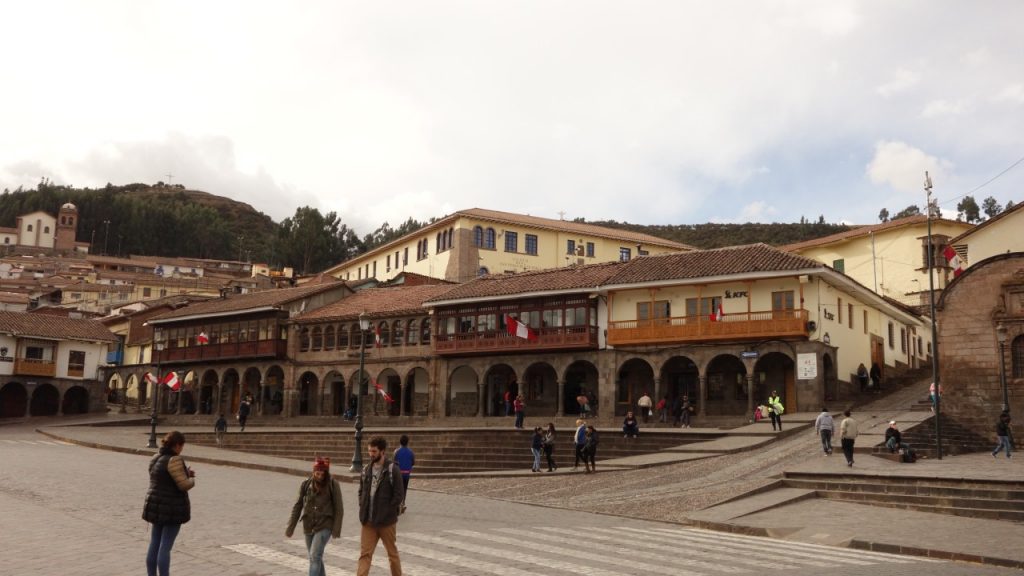
In the old city part there is strict rules on what owners are allowed to do with (the facades of) the buildings. Hence; KFC is present, but visually not as intruding as in Europe. Me gusta 🙂
On the funny side… Nobody seem to take notice of the traffic lights. This is no news for me as I experienced this in La Paz6 as well, where everybody just seemed to drive where-ever they could. What is news is that the (local) authorities seems to have acknowledged this problem. But… instead of educating the public and/or handing out fines to traffic light violators, their solution is to station one or two traffic wardens (women) in the light crossing. Not to keep order per se, but to look at the traffic light, and indicating go go go to the direction with green while blowing their whistles. Pretty silly.

So in Peru they have acknowledged that traffic lights do not have any effect. Their solution? Put a (female) traffic warden in all their traffic controlled crossings.
And while speaking of whistles… here comes the not so fun part of Cusco. Tourist police (to keep tourists safe) walking around near the square, doing nothing but blowing their whistles from time to time. Apparently this is to create awareness of their presence (yes, I can see you clearly in your neon green west, thank you). Cars honking all the time to get attention because they also function as a taxi (but with no sign). Locals trying to get your attention to sell you sun glasses, polish your shoes, “free” massages, and souvenirs. There is never a second of peace and quiet in the city, and after 3 days with this, I felt that I had seen what I needed to see of Cusco.
Next stop…
Arequipa – I think. With my visit to Machu Picchu, I have reached my second big goal I had with this trip (Patagonia being the first) and I will now slowly drive southwards to be in Chile in August.
Thank you for reading… take care.
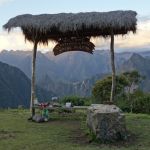
- The community is named Llachón and is located at the tip of a peninsula a the northern side of the lake in Peru. ↩
- Recently re-named to Machu Picchu Pueblo – although the old name still lingers. ↩
- And 12 USD to get down again… ↩
- Machu Picchu Montaña is one of the two popular peaks on either side of Machu Picchu that tourists can ascend to have a great overview of the citadel. ↩
- — Not! But Machu Picchu Pueblo is in 2000m height, and the Montaña is in 3060m height and with roughly 3 steps pr altitude meter… ↩
- So, La Paz is an awful city to drive around in. It is build in a pot – every direction you go, you either go steep upwards, or steep downwards. You can do nothing but follow the dense traffic and try not to be too hard on your clutch. Anyway… so at one time I was the first vehicle at a light crossing that had turned red. After a little while, the traffic on the other side of the traffic light started to move again. I, of course, did nothing (red light), and not 3 seconds went by before the cars behind me started honking their horns. On the right corner, there were a couple of police officers standing. They were not interested in the traffic light or the cars, but well… they were there, so instead I just turned around to see who was honking. I caught the gaze of the driver in the truck behind me. He was gesticulating go go go. Gesticulating towards the police officers he indicated dismissal – they would not do anything… so just go…! I just waited the 5 seconds more until the light turned green, and then drove the 15 meters forward that the traffic now allowed :-/ ↩


The Madidi Jungle experience
So the main attraction the last week would be the Madidi Jungle tour. The jungle was not really part of my plan to begin with, but it seems that everybody was/is stoked on how great it is, so when the Madidi jungle popped up on my radar, I thought why not.
But… I don’t know if I had too high expectations for the trip or I am just and old ungrateful bastard, but again I found myself thinking was this it? I mean… it was fun to experience the jungle and all – even-though it was not as dark an dense as I had imagined it – but it did not seem like such a great revelation as others have made it out to be. For starters, I did not see as much wild life as I had expected. Well… I did know that wild life were more easily explored on a pampas tour, but still… the guide seemed eager to show us monkeys, and I was just thinking where is the puma or the jaguar!?!?!? But we did get to see some cool leaf cutter ants 🙂

Leaf cutter ants. They are actually farmers… they put the leafs into a hole and cultivates fungus, which they eat.
I think one thing that also nagged me was that I had deliberately chosen a tour company that was not the cheapest one – the Madidi Jungle Ecolodge. Partly because they were going further up the river in the jungle (and they told me that would increase the chance of spotting wild life a bit) but more because I got the impression that some of my money would go to the conservation of the Madidi national park. Unfortunately, during my stay at the lodge, we did not get information about this conservation. I tried to ask a bit about it, but got vague answers. It probably did not help that the guide was not fully fluent in English (though advertised so) and there were several occasions where I did not fully understand what he meant. There were also occasions where he clearly did not understand my question either, but instead of trying to clarify my question, he would just answer that he thought I was asking about :-/
But it was a good experience none the less. I skipped the pampas tour, though. Mainly because when the local staff tried to sell me a pampas tour (and while reading about it on the net) they only mentioned the same animals as I had already seen in the jungle.
Ruta 3
But what was fun, though, was the Ruta 3 from Coroico to Rurrenabaque. Or to be more correct; the fun part was from Coroico to Yucumo.
First thing that got my attention was… hey(!) what is this car doing in my lane!?!?!? And by the looks of his sudden reaction, he must have been thinking the same about me.
Turns out, I was in the wrong lane. He stopped and explained me that on this road, you drive in the left lane. Reason: When people are going down the mountain, they will be furthest away from the cliff and thus have the best overview of on-coming traffic. To be honest, a couple of days earlier I had been told the same on the Death Road, but I just thought it was a rule they had made for the sake of the mountain-bikers on the Death road and not anywhere else. But along Ruta 3, there are two stretches which are left hand sided. I just missed the sign!1 But then comes the question… when does it go back to right hand side driving? Even the locals are not sure and the best advice is to proceed with caution…
Second thing about Ruta 3 is it’s condition. It was gravel road and it was a bit more rough than what I had encountered at Ruta 25. I had kind of figured that one out when I heard/read stories about trucks and buses taking 15 hours or more to drive that stretch. But further-more, it is littered with pot holes. Not just on the gravel (which was interesting enough) but also on the asphalt. You can have (fairly) good asphalt, and then suddenly pot holes are littered on the road. Some up to a square meter in size, some 30-40 cm deep. Better to avoid these 🙂
In general driving on the road was an interesting experience. Some parts would be asphalt. Other dirt road. But I did not find the logic in which stretches were asphalt and which were dirt roads. It would vary between a few kilometers of asphalt, then some dirt road, then asphalt again. A couple of times you would only have 20m to 100m of dirt road before a new stretch asphalt would begin. According to a local guy, the problem would be corruption. I saw a plaque along the road informing about the construction of the road between La Paz and Trinidad (which covers Ruta 3). It was dated back in 19822. Along the road there are 2 good tunnels that have been build – but never taken into use. What would happen is that some company would get a bag of money to build (a part of) the road, but after a while the money would be gone and the work perhaps only 1/3 completed. Then a new bag of money would be given – but with same result. And so on… They are still working on asphaltising new stretches as we speak.
The end result? A funny mix of old un-maintained road with several pot holes and bumpiness (due to geological activity) along with rather new stretches of road in good condition.
Oh well… it just makes it a more interesting ride 😉 In the end, it was not as big a marathon as Ruta 25. Approximately 200km of interesting road, covered in 6-7 hours. But great views along the way 🙂
Next stop…
Lake Titicaca, Cusco, and Machu Picchu 🙂
Take care.

- To be honest, I am not quite certain if I missed the sign, or if I saw the sign but just did not pay attention to it. The thing about signs in Bolivia is that a) when there is a sign prohibiting or ordering you to do something, there is rarely a sign negating the first one. E.g. if there is a speed limit, it is more or less up to you to guess when the limit is lifted again. And b) signs are often ignored. You are only allowed to drive 35 km/h? Locals go 80 or more regardless. Not allowed to take over? Who cares!?!?!? Even traffic light is ignored – like when you stop at a red light in La Paz, and there is a couple of police men just next to the crossing, and people behind you start honking at you because there is plenty of room for you to cross the light!?!? ↩
- Or was it in 1988? Unfortunately I was not smart enough to take a photo of it… ↩


Ruta 25
At the moment I am sitting in a hostel in La Paz. It was not my intention to go to La Paz, but well… problems with my motorbike and you don’t really get much help in the smaller cities. Even in La Paz, I think it is difficult to get decent spare parts for what you need. As I said before… you can get anything you want, as long as it is cheap. But you also get what you pay for…
Ruta 25
So it started with Ruta 25.
Ruta 25 goes from Cochabamba to Coroico and is a 450km stretch of dirt road. As the rookie I am, I did not quite realise that. I did notice, though, that I had troubles getting my GPS to draw up the route for me; each time I tried, instead of going directly through Ruta 25, it suggested that I took the long way west around the mountains – and that road would take 8½ hour. Perhaps that should have tipped me off…!?!?
Well… so I packed some food for a sleep over in the wild; it was 1 o’ clock when I left Cochabamba, and I thought perhaps it would take a day and a half riding. Weather was good, view was fantastic, and I had read on a blog that other bikers had overnighted in Indepencía1.
It did not go as fast as planned. I still needed about 50km to Indepencía when it started to get dark. So I found a good place to camp (which is actually a bit difficult when you are in the mountains and all flat spots seems to be taken by small settlements) and called it a day. Next day I would take a long stretch and be in Coroico by evening. Good plan. Except – when I tried my GPS again (from current location to Coroico) it still wanted me to go back to Cochabamba (where I came from) and take the long way2 around. Perhaps that should have raised an alarm….!?!?!?
Day 2
Next morning… early up and going. At one point, I came to a river crossing. Information from other travellers3 had mentioned that there once had been a bridge, but now it was not there any-more. So you had to cross the river directly – which would be no biggie. Other motor-bikers had done it and it was the dry season. Not much water here…
Well… turns out… once you get a little bit closer… it doesn’t seem so dry any-more. I went out into the river on the banks, but at some point I could not see my way through. My experience with water crossing had until now only been the small occasional water passages on the dirt road – mostly here on Ruta 25 – and I did not like the thought of getting stuck out there in the middle of the water :-/
Luckily I spotted 2 trucks coming down the mountain, driving my direction, so I thought I would just wait a bit and tag along with them. They came down to the river and started crossing it without hesitation. The water reached two thirds up on their wheels and I though “Ok – if that’s the way, then that’s the way…” and followed.
Don’t quite know if I missed the exact same trail, or if I just mis-judged the water level on the trucks, but suddenly the whole idea did not seem that well. The water quickly soaked my boots and I immediately remembered the words of Mick and Tómas saying that the KLR did not go well with water too high. Well… no way out – I did not like stopping right there – so I gave more throttle, and then the water got deeper – now reaching my knees.
But in the end I got through (of course 😉 ) and I was safely on the other side. Great 😀
But it had also taken a bit of time, and looking at the GPS, I realised that I was far far from my goal of Coroico. I had to make it another night out here. Long story short, I was offered to sleep in a communal house in a small city. This is where I met my favourite Bolivian electrical installation.
Day 3
Ok – last day. Surely I would make it to Coroico today. My boots were wet – but the GPS finally accepted that the shortest route was along Ruta 25 – and it said I would be there at 15 o’ clock. This was also confirmed at lunch time where a friendly local asked where I was going and replied with the same time estimate.
Not so fast, my friend!
The time estimate kept shifting during the afternoon. Don’t quite know why – but slowly 3 became 5, which became 7, which became 8. One of the more critical things that happened was that my rear brake broke. One of the bolts that holds it in place snapped and then, of course, no brake function. At that time it was already 5 o’ clock (sun sets around 6 o’ clock), my feet was starting to hurt from being in the warm wet boots all day, and I still had 80km left. But I did not like the thought of camping another night out and the GPS kept saying that I would be there soon – so I pressed on.
I finally reached my hostel (Hostel Sol y Luna – recommended by other travellers) at 8pm. The hostel also had a restaurant associated with it – which I had been looking very much forward to. Unfortunately, because this is off season, the restaurant closed at 8, and since I did not feel like walking down into town (1km steep down hill with sore feet) that evening’s dinner consisted of rice, bouillon, and canned tuna. Not quite what I had hoped for :-/
In total, I spend 18.5 hours driving – not including time for eating, photos, camping etc.4. I had a an average speed of 25km/h. All 450km driven in 1st and 2nd gear.
Coroico, Death Road, and La Paz
So I spend a few days in Hostal Sol y Luna in Coroico, trying to fix up my bike. In addition to the brake that needed repair, also the gear pedal was a bit loose, the horn had stopped working, the battery had died, and the tyres were closed to be worn out. While the brake and gear pedal was fixable in Coroico, the horn and tyres were not. Well, not so critical. Most critical was the battery. Two cells had been emptied (perhaps on the two occasions where I had my bike down on the side?) so I filled it up with distilled water, but was unsure if it would work again or not.
Long story short – I decided to change my plans and go to La Paz for a new battery. Tyres and horn could wait a bit – but the thought of having to run-start my bike each time I stopped did not seem appealing to me. So I took the Death Road up to La Paz.
Verdict?
Meh…
I had more adventures on the Ruta 25. I am sure the views can be great on Death Road – but most of the time that I spend in Coroico (including today on the death road) it was cloudy / foggy. Furthermore, the past 5 years the Death Road has been sanitised a lot (with barriers so people don’t drive off the cliff in the curves) and the only traffic on the road are mountain-bikers going downhill. Not nearly as exciting as an oncoming truck on Ruta 25 that just honks twice before going into a curve 😉
The battery seemed to live up after a couple of hours driving (great) so instead I spend the whole day looking for good tyres. Tomorrow I will hopefully have my (fully functioning) KLR back – and I will try to head towards Rurrenabaque – which apparently is the place to go for a jungle tour and a pampas tour. Update will follow 🙂
- Yeah… sometimes they have a bit funny names here in South America. Other European-funny, but popular, names are Concepcíon (which you have met before) and Constitucíon. ↩
- Which is actually not that much longer. 480km “detour” vs. 450km “directly”. But I did not know that at that time… ↩
- Thank you guys on iOverlander. ↩
- Moving time, reported by my GPS. ↩


